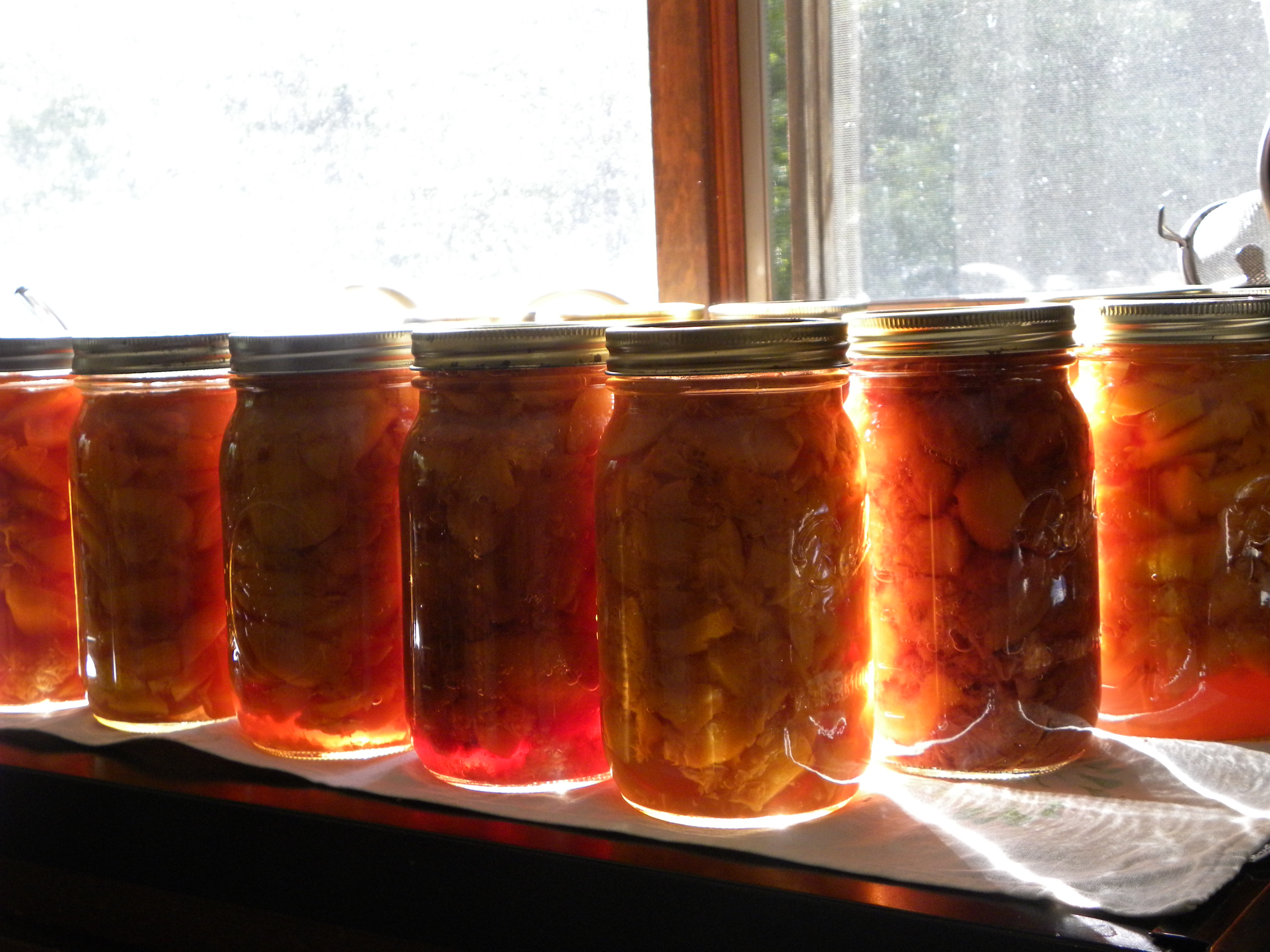At a sustainability gathering I attended this summer, someone asked: “How can we eat locally in New England when our growing season is so short here?”
It’s a good question – in August it’s easy but what about January?
There are also good answers! The top two being: eat seasonally and preserve the harvest. Both of these were the norm for most of human history and make sense permaculturally. Permaculture principle 2 instructs us to Catch and Store Energy which is exactly what food preservation does. Principle 9 tells us to Use Small and Slow Solutions, such as eating what we have when we have it then turning to home or community-scale food saving.
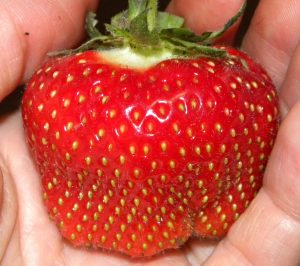
A July Strawberry
Eat Seasonally
There is no reason we have to eat the same foods every day of the year. In fact, I think it’s boring to do so and can lead to taking things for granted. When a food comes in to season I am more excited for it because I haven’t tasted it for awhile. Salads are for spring and summer. Fresh strawberries in July. Leeks are for fall and winter. By March I am getting tired of roasted potatoes, but when I start digging for them in September my appetite for them has returned. Eating this way also reconnects me to the land and seasons of the place I am rooted with awareness and appreciation.
Preserve the Summer Harvest
Lucky for us, making it through the winter without relying on a vast distribution network was the only option until just recently. People had to develop the skills and technologies to do so or they didn’t survive. We can do these again: drying, canning, freezing, lacto-fermenting and root cellaring. There are also quite a few foods that come to us in a shelf-stable form, such as dry beans. I use all these techniques, finding different foods a good fit for each. Let me touch on each method here…
Drying
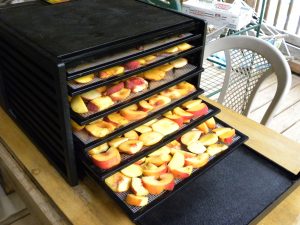
Drying Fruit
As soon as the stinging nettles are ready to harvest in the spring, I start drying some for winter use. Most leafy herbs just need a little heat, like a sunny window in the house or car. I put them in paper bags to protect them from the intense light and it just takes a few days. Then I move on to using my electric dehydrator for foods with more substance. I find greens such as kale dry well and reconstitute nicely in a soup, stew, or for pan-roasting with other veggies on the stove. I especially love making my own dried fruit: peaches, pears, hardy kiwis, and grapes (raisins) are so yummy!

Canning Peaches
Canning
I taught myself to can from a Ball Blue booklet back when I had to special order supplies at the hardware store. What a resurgence of interest since then! I only water bath can so use high acid foods like fruits. This year I put up peaches, blueberries, strawberries, currants, and tried a new pickled beet recipe with vinegar to raise the ph.
Freezing
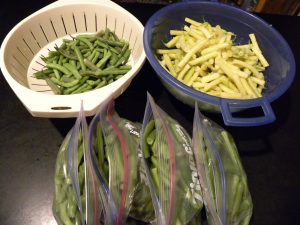
Freezing Beans
This a newer technology which needs a continuous electricity supply to work, so has vulnerabilities. However, it successfully stores many things that are tricky to do in other ways, such as meat and low-acid veggies which don’t dry well like broccoli and eggplant.
Lacto-fermenting
Lacto-fermenting not only preserves food, but the microbes that take up residence are so good for us. With all the new discoveries about the importance of our microbiome, especially in our digestive tracts, I aim to eat something fermented every day and it has improved my health. Lots of veggies can be prepared this way, cabbage and cucumbers being the most well-known as sauerkraut and pickles, and since we have dairy we also make yogurt and cheeses.
Root Cellaring
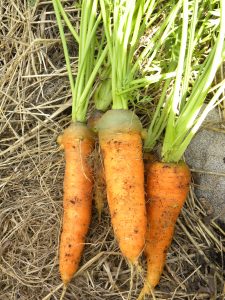
Carrots
Burying foods, especially ones that grew in the ground, is an ancient practice. The more modern walk-in root cellars date back a few hundred years. The idea is to take advantage of the cool temperatures, high humidity and darkness underground, like a refrigerator passively powered by the earth. Since we don’t have a basement in our house, we had to dig a big hole and spend a few years doing stonework and other construction. This is the first year we’ll use it. Carrots, beets, parsnips and celery root currently growing in the garden will soon be packed in sand for this trial run!
Long Keepers

Curing Garlic in July
Quite a few foods are happy to stick around a long time with just a little help from us. Grains, beans, nuts and honey are great examples. But quite a few veggies can last longer than you might think. “Curing” certain crops – which essentially means further drying them – helps them last much longer without a fridge or root cellar. Spending a couple of weeks after harvest somewhere dry and warmer than storage temps will give potatoes, garlic, winter squash, and onions a shelf life of many months and better flavor. Sunflower seeds, dried beans and popcorn are currently hanging in our living room near the wood stove as well.
Using these techniques it’s not hard to stretch this year’s bounty through to spring harvests, like people throughout history and around the world do as a matter of course.
In my next few posts, I’ll look deeper in to each of these technologies while I’m finishing up using them for our own local winter eating.

Corn Hung to Dry

